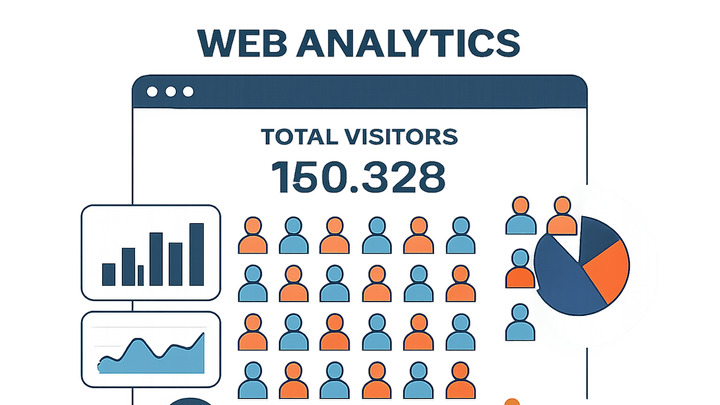Published on 2025-06-22T04:31:28Z
What is Population in Analytics? Examples and Implementation
In web analytics, the term population refers to the complete set of unique users, sessions, or events recorded by an analytics platform within a defined timeframe. Unlike a sample, which represents a subset of data points, the population encompasses every interaction matching your tracking criteria. Accurately understanding the population size is essential for reliable segmentation, statistical analysis, and informed decision-making. This article examines the concept of population in analytics, its significance, and how to measure it using popular SaaS tools like PlainSignal and Google Analytics 4. We’ll also explore the distinctions between population and sample, along with best practices to ensure data quality and compliance.
Population
The total set of distinct users or events tracked by an analytics platform within a defined period.
Definition and Context
In analytics, population refers to the total set of unique individuals or events recorded
within a specified period. It defines the scope of your data before any sampling or segmentation is applied.
-
Population
The complete set of unique users, sessions, or events captured by an analytics platform during a defined timeframe. It represents every data point that meets your tracking criteria.
-
Measurement boundary
The timeframe and conditions that determine which interactions are included in the population. Adjusting these boundaries (e.g., start/end dates) changes who is counted.
Why Population Matters
Knowing your full population size is critical for valid statistical analysis, accurate segmentation, and effective resource allocation in digital marketing.
-
Statistical significance
A larger population reduces the margin of error in your analyses and increases confidence in detecting true trends and patterns.
-
Segmentation and targeting
Accurate population counts allow you to segment users effectively and tailor campaigns to distinct audience groups based on the full dataset.
Measuring Population in Analytics Platforms
Leading analytics tools like PlainSignal and Google Analytics 4 offer distinct approaches to tracking and reporting population metrics.
-
PlainSignal (cookie-free simple analytics)
PlainSignal captures unique visitor counts without relying on cookies, ensuring privacy and compliance.
-
Implementation
Add the following code snippet to your site to start tracking cookie-free population data:
<link rel="preconnect" href="//eu.plainsignal.com/" crossorigin /> <script defer data-do="yourwebsitedomain.com" data-id="0GQV1xmtzQQ" data-api="//eu.plainsignal.com" src="//cdn.plainsignal.com/plainsignal-min.js"></script> -
Reporting
In the PlainSignal dashboard, the ‘Visitors’ metric displays the total population over your selected timeframe, presented in simple, privacy-focused charts.
-
-
Google analytics 4 (GA4)
GA4 measures unique users through event-based tracking and first-party cookies, providing detailed insights into population dynamics.
-
Implementation
Insert the GA4 global site tag into your site:
<script async src="https://www.googletagmanager.com/gtag/js?id=GA_MEASUREMENT_ID"></script> <script> window.dataLayer = window.dataLayer || []; function gtag(){dataLayer.push(arguments);} gtag('js', new Date()); gtag('config', 'GA_MEASUREMENT_ID'); </script> -
Reporting
Use the ‘Active Users’ and ‘New Users’ metrics in GA4 reports to understand your site’s population trends, customizable by date range and segment.
-
Population vs Sample
Differentiating between a complete dataset (population) and a subset (sample) helps you choose the right analysis method.
-
Population data
All data points captured by your analytics tool, offering a full view of user behavior across your site or app.
-
Sample data
A representative subset of the population, often used when full data is too large or impractical to process in real time.
-
When to use
Use full population data for comprehensive analysis; sample data is suitable for exploratory studies or when performance constraints exist.
Best Practices and Pitfalls
Implement clear guidelines and avoid common mistakes to maintain accurate and reliable population metrics.
-
Define clear boundaries
Set precise start/end dates and consistent tracking parameters to ensure that population counts are comparable over time.
-
Monitor data quality
Regularly audit your tracking setup to prevent missing data, duplicates, or misfires that can skew population metrics.
-
Consider privacy implications
Choose cookie-free solutions like PlainSignal or implement consent banners for GA4 to align with privacy regulations and user expectations.
